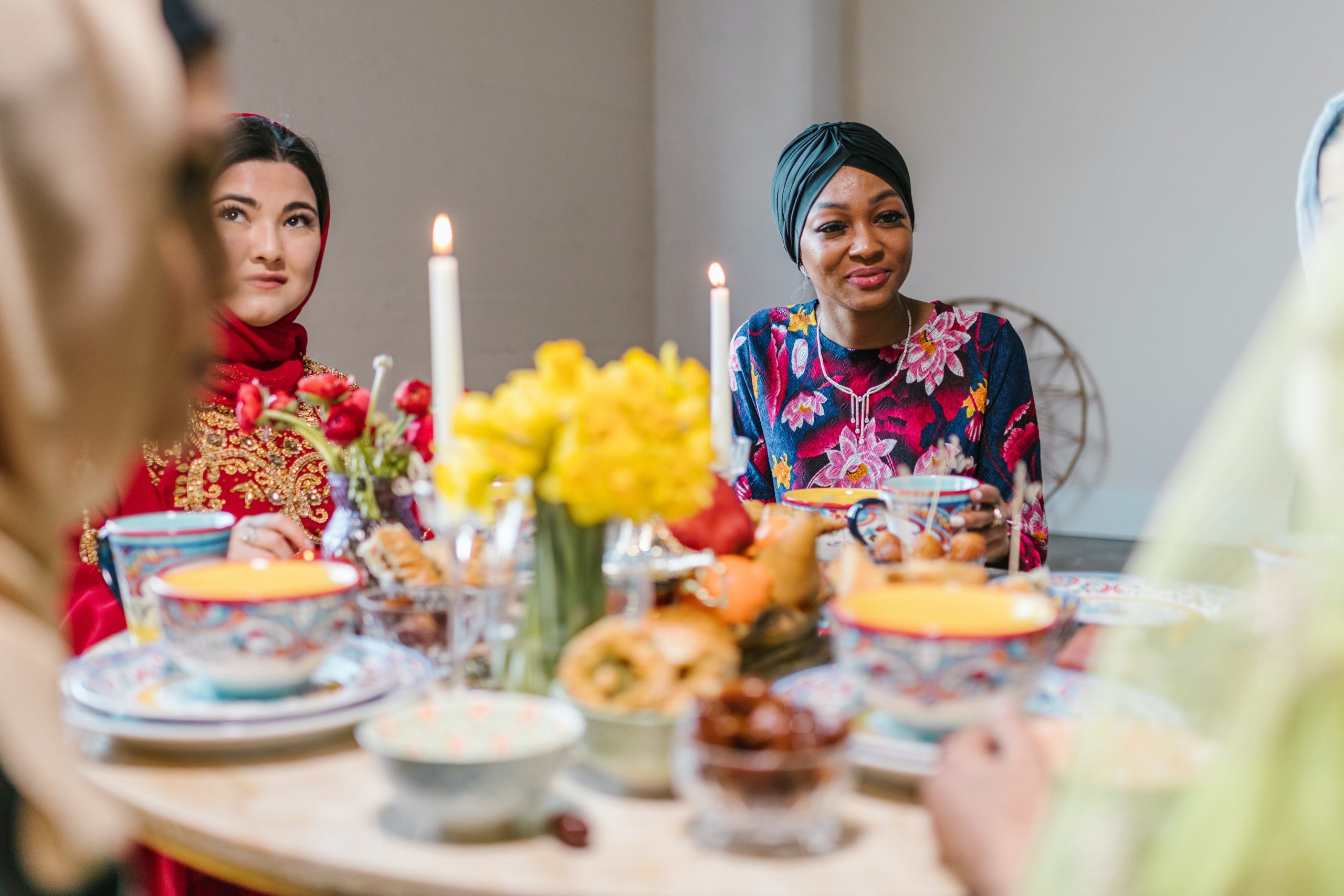Wearing new clothes during Eid holds significant cultural and religious importance.
The holy month of Ramadan is often a time for self-reflection ahead of Eid al-Fitr, which marks a new beginning for more than two billion Muslims globally.
Wearing new attire to mark the holiday – especially when performing the morning Eid prayers – holds significant cultural and religious importance.
It is considered a symbol of new beginnings, purity, and renewal of faith, as well as a way to express joy and gratitude.
For many generations, the Eid outfit has always been a central part of upbringing and a crucial element of people’s earliest memories of the holiday.
For 19-year-old Moza, a Qatari citizen, the “carefully chosen” Eid outfit “embodies the feeling and spirit” of the festivities that she has felt since she was a child.
“As a little girl I used to match my Eid outfit with my two cousins and I remember my mom and aunt would choose the style or ‘model’ as they called it and then they would go to fabric shops looking for the colours and types of fabrics,” Moza told Doha News.
Similarly, Noora, Qatari citizen in her late 20’s, would always shop for the outfit with her mother weeks before Eid and she would even line them up next to her bed on the holiday’s eve.
“Picking outfits was something I did with my mother and it showed me how much she cared about me. It used to make me feel happy and excited to share my outfits with my family, so it was always a fun experience,” Noora said.
Echoing Moza and Noora, Amal, a Qatar-based Syrian in her early 20’s, remembers the excitement of shopping for the Eid outfit and eagerly waiting for compliments from loved ones.
“My sisters and I made it a habit to also get dressed together on the morning of the first day of Eid, and it lasted even after one got married and had kids. She would bring all her stuff over and her kids’ stuff and we get ready together,” the young Syrian said.
Amal also describes the Eid outfit as a celebration of one’s Muslim identity and a sense of pride in one’s faith, a perception that numerous scholars agreed on.
While Muslims are not obligated to wear new clothes on the day of Eid, scholars say that it is rather desirable for one to adorn themselves for the celebration, by showering and wearing a clean outfit.
Changing times
On Eid morning, children can be seen in mosques around the world donning their new outfits in prayer halls as they receive treats and gifts of money.
However, the excitement of buying and wearing new clothes may fade away for some as they grow older.
For Moza, choosing the Eid outfit has turned into a mere task that has lacked some of the traditional joys.
“I think what made the Eid outfit and Eid day much more joyous before is the tradition of walking in the streets of neighbourhoods on Eid morning and getting Eidyia from the neighbours,” Moza said, referring to Eid gifts, which often come in the form of cash.
Instead of walking around the neighbourhood to collect the Eid money, children now simply stick to planned visits to family and close friends and await the highly anticipated cash to spend on items that they once had on their wishlists.
“Now the Eid outfit is an outfit for a more formal or a less spontaneous event,” Moza said.
Similarly, Amal believes the tradition and the emotions tied to it have changed as it has become an obligation for many.
“Eid was a chance to buy outfits we wouldn’t often get to buy during the year so it was something to look forward to and it was a big deal. However, as grownups, buying a new outfit for Eid as nice as it can be, feels more like it’s out of social obligation,” she said.
Aida, who is in her 50’s, looks back at the memories she had during much simpler times when social media was non-existent and smaller details were more valuable.
“Oh, what beautiful memories, from the night before when I brought my clothes and the accessories that I would wear with the clothes,” Aida, a Lebanese residing in Qatar, told Doha News.
Explaining the appreciation Aida’s generation had for such elements of life, she used the example of putting her clothes on the sofa next to her bed along with her accessories on the eve of Eid.
“My heart was happy to wear them the second day… And the first day of Eid was like a fashion show among the children of the family… Everyone was proud of their new clothes… It was an innocent and simple joy,” she said, reminiscing at the past.
Regardless of the generation, the Eid outfit has remained a crucial part of the celebration, with many more people like Aida, Amal, Noora, and Moza having their own unique memories of the tradition.
“It’s like a symbol of new beginnings, happiness, and celebrating Muslim identity in a way we don’t get to often do. It can represent a sense of belonging, pride, and celebration of our faith,” Amal said.







